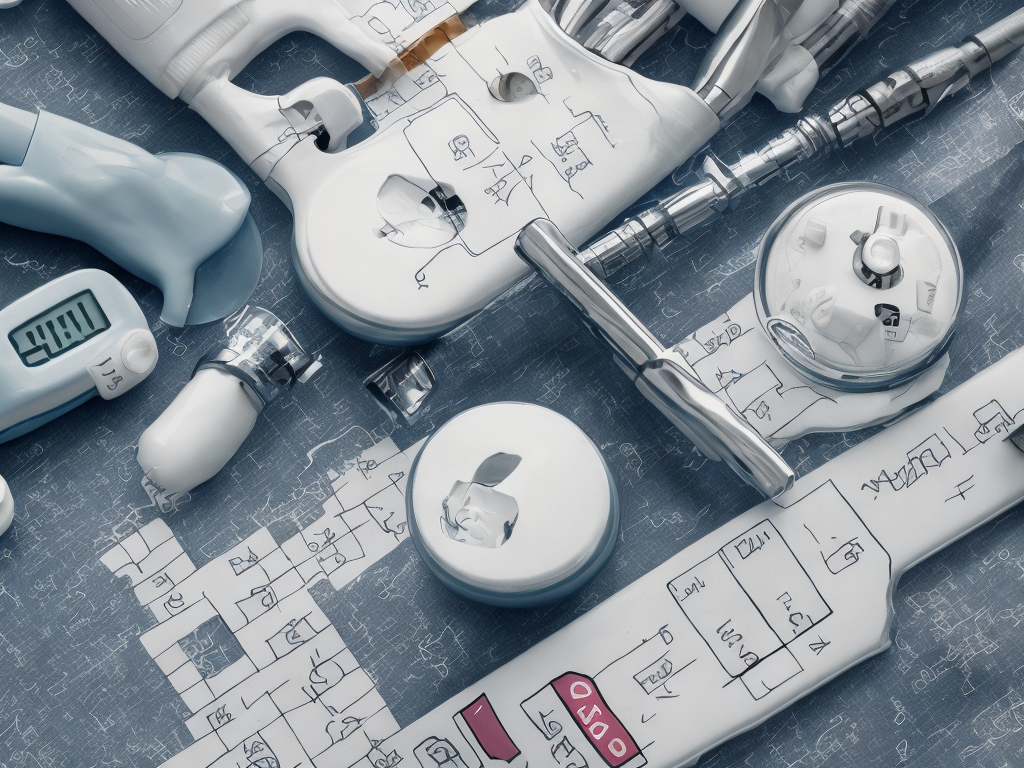
Diabetes is a chronic medical condition that affects millions of people worldwide. It is characterized by high blood sugar levels due to the body's inability to produce or effectively use insulin, a hormone that helps regulate blood sugar. There are two main types of diabetes: type 1 and type 2. While both types share similarities, they also have distinct differences that set them apart. Understanding these differences is crucial for proper diagnosis, treatment, and management of the disease.
Type 1 diabetes, previously known as juvenile diabetes or insulin-dependent diabetes, is an autoimmune condition where the immune system mistakenly attacks and destroys the insulin-producing cells in the pancreas. This results in little to no production of insulin, making it necessary for individuals with type 1 diabetes to rely on insulin injections or insulin pumps to regulate their blood sugar levels. Type 1 diabetes is often diagnosed in children and young adults, but it can occur at any age.
On the other hand, type 2 diabetes, formerly known as adult-onset diabetes or non-insulin-dependent diabetes, occurs when the body becomes resistant to the effects of insulin, or when the pancreas does not produce enough insulin to meet the body's needs. Unlike type 1 diabetes, type 2 diabetes is often associated with lifestyle factors such as obesity, unhealthy diet, sedentary behavior, and genetic predisposition. It is more commonly diagnosed in adults, although it is becoming increasingly prevalent among younger individuals due to the rise in childhood obesity rates.
One of the most significant differences between type 1 and type 2 diabetes lies in their causes. Type 1 diabetes is an autoimmune disease, which means the immune system mistakenly attacks and destroys healthy cells in the body. In type 1 diabetes, the specific target of the immune system is the insulin-producing cells in the pancreas. The exact cause of this autoimmune response is not fully understood, but it is believed to be a combination of genetic, environmental, and possibly viral factors.
In contrast, type 2 diabetes is primarily caused by a combination of genetic and lifestyle factors. Being overweight or obese, having a sedentary lifestyle, and having an unhealthy diet can contribute to insulin resistance, where tissues in the body fail to respond properly to insulin. Over time, the insulin-producing cells in the pancreas may also become exhausted and produce less insulin. Genetic factors can further increase the risk of developing type 2 diabetes, but lifestyle choices play a significant role in its development.
Another important difference between type 1 and type 2 diabetes is the onset and progression of the disease. Type 1 diabetes often has a sudden onset, with individuals experiencing symptoms such as excessive thirst, frequent urination, unintended weight loss, and fatigue. These symptoms can develop over a short period, sometimes even within weeks or months. Type 1 diabetes requires immediate medical attention and the use of insulin to regulate blood sugar levels.
In contrast, type 2 diabetes may have a gradual onset, and symptoms may go unnoticed for an extended period. The body can compensate for insulin resistance initially, but as the condition progresses, symptoms may start to appear. These symptoms can include increased thirst, frequent urination, fatigue, blurred vision, slow healing of wounds, and frequent infections. Type 2 diabetes can often be managed initially through lifestyle modifications such as weight loss, improved diet, and increased physical activity. However, if blood sugar levels remain uncontrolled, oral medications or insulin may be necessary.
Treatment options also differ between type 1 and type 2 diabetes. Individuals with type 1 diabetes will require lifelong insulin therapy since their pancreas does not produce insulin. Insulin can be administered through multiple daily injections or through an insulin pump, which provides a continuous supply of insulin. The goal of treatment for type 1 diabetes is to maintain blood sugar levels within a target range to prevent complications and lead a healthy life.
In contrast, treatment for type 2 diabetes may involve a combination of lifestyle modifications, oral medications, and, in some cases, injectable medication, including insulin. Lifestyle modifications may include weight loss, healthy eating, regular physical activity, and monitoring blood sugar levels. If these measures are not sufficient to control blood sugar levels, oral medications such as metformin, sulfonylureas, or DPP-4 inhibitors may be prescribed. In cases where blood sugar levels remain uncontrolled, injectable medications like GLP-1 receptor agonists or insulin may be necessary.
Complications that can arise from both types of diabetes also differ. Individuals with type 1 diabetes, if untreated or poorly managed, are at risk of developing acute complications such as diabetic ketoacidosis (DKA). DKA occurs when blood sugar levels are extremely high, and the body starts using fat as an alternative source of energy, leading to the production of ketones, which are toxic in high amounts. If left untreated, DKA can result in a life-threatening condition.
Type 2 diabetes, if uncontrolled, can lead to long-term complications such as cardiovascular disease, kidney disease, nerve damage (neuropathy), eye problems (retinopathy), and foot ulcers. The risk of developing these complications can be reduced by maintaining good blood sugar control and managing other risk factors such as blood pressure and cholesterol levels.
In conclusion, while both type 1 and type 2 diabetes share similarities in terms of high blood sugar levels, they have distinct differences in their causes, onset, progression, treatment, and complications. Type 1 diabetes is an autoimmune disease that requires lifelong insulin therapy due to the absence of insulin production. Type 2 diabetes, on the other hand, is primarily caused by a combination of genetic and lifestyle factors and can often be managed initially through lifestyle modifications. Understanding these differences is essential for healthcare professionals, individuals with diabetes, and their loved ones to ensure proper diagnosis, treatment, and management of the disease.
 Self-Instruct
Self-Instruct